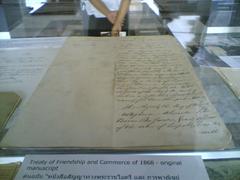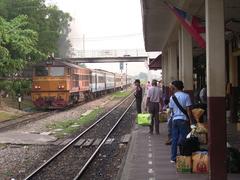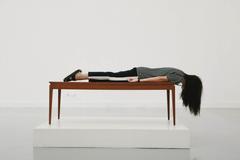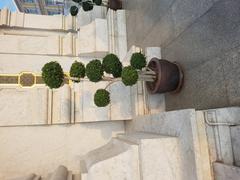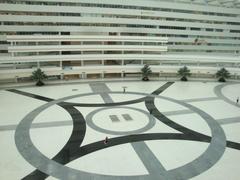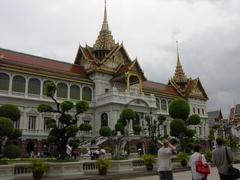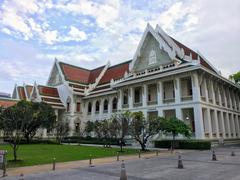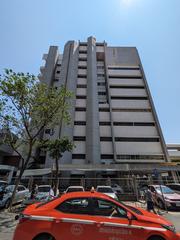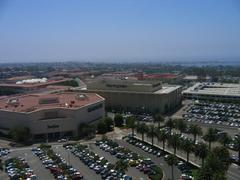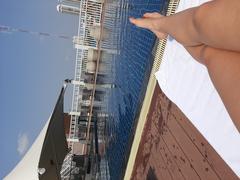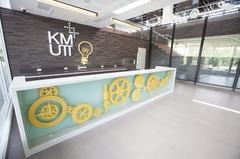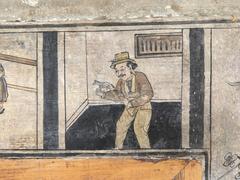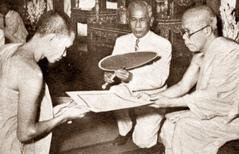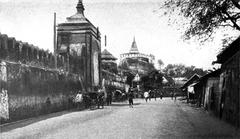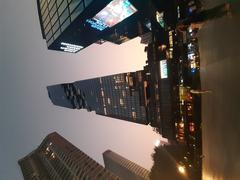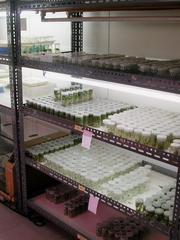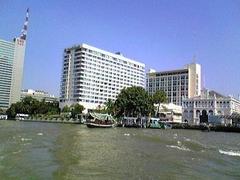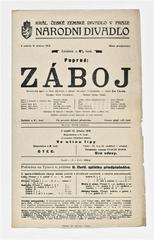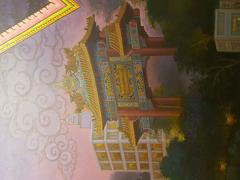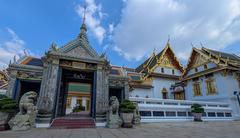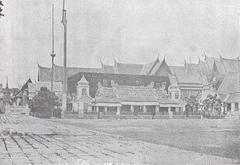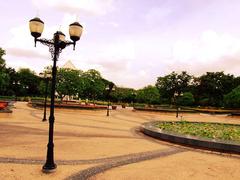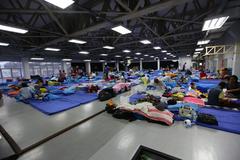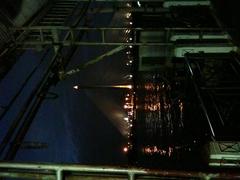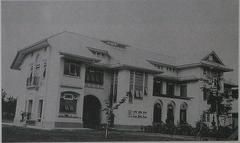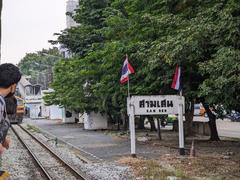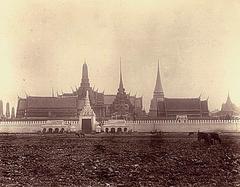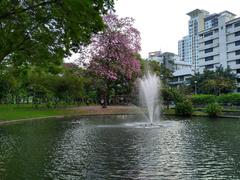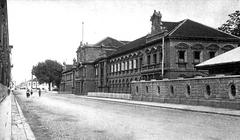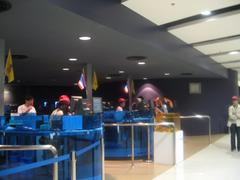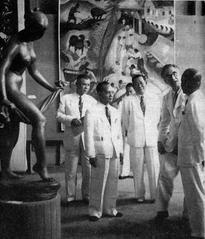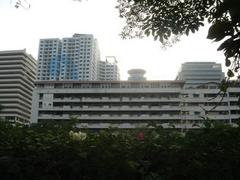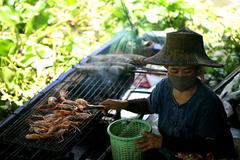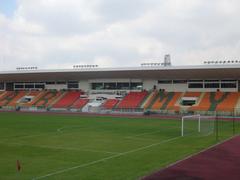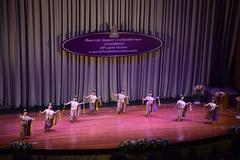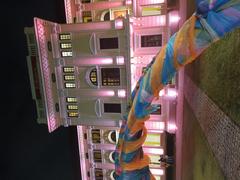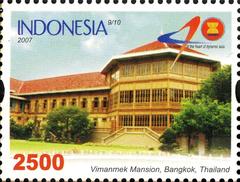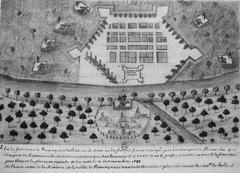Visiting The Grand Palace in Bangkok: Hours, Tickets, and Tips
Date: 16/07/2024
Introduction
The Grand Palace in Bangkok, Thailand, known in Thai as พระบรมมหาราชวัง, is an iconic symbol of Thailand’s rich cultural and historical heritage. Established in 1782 by King Rama I, the founder of the Chakri Dynasty, the Grand Palace served as the official residence of the Kings of Siam (and later Thailand) for over 150 years (source). The palace complex, located on the eastern bank of the Chao Phraya River, is a breathtaking blend of traditional Thai and European architectural styles, reflecting the country’s adaptation to global influences over the centuries.
The Grand Palace is home to the revered Temple of the Emerald Buddha (Wat Phra Kaew), one of the most sacred Buddhist temples in Thailand. The palace’s historical and cultural significance, coupled with its architectural splendor, makes it a must-visit destination for travelers. This comprehensive guide aims to provide visitors with essential information, including the history of the Grand Palace, visitor tips, and details about nearby attractions, to ensure a memorable and respectful visit (source).
Table of Contents
- [Introduction](#introductionintroduction)
- [History of พระบรมมหาราชวัง (The Grand Palace)](#history-of-พระบรมมหาราชวง-the-grand-palacehistory-of-พระบรมมหาราชวง-the-grand-palace)
- [Origins and Construction](#origins-and-constructionorigins-and-construction)
- [Architectural Evolution](#architectural-evolutionarchitectural-evolution)
- [Historical Significance](#historical-significancehistorical-significance)
- [Cultural and Religious Importance](#cultural-and-religious-importancecultural-and-religious-importance)
- [Visitor Information](#visitor-informationvisitor-information)
- [Grand Palace Visiting Hours](#grand-palace-visiting-hoursgrand-palace-visiting-hours)
- [Grand Palace Tickets](#grand-palace-ticketsgrand-palace-tickets)
- [Travel Tips](#travel-tipstravel-tips)
- [Nearby Attractions](#nearby-attractionsnearby-attractions)
- [Accessibility](#accessibilityaccessibility)
- [Preservation and Tourism](#preservation-and-tourismpreservation-and-tourism)
- [Key Historical Events](#key-historical-eventskey-historical-events)
- [Modern-Day Relevance](#modern-day-relevancemodern-day-relevance)
- [FAQ Section](#faq-sectionfaq-section)
- [Conclusion](#conclusionconclusion)
- [Call to Action](#call-to-actioncall-to-action)
History of พระบรมมหาราชวัง (The Grand Palace)
Origins and Construction
The Grand Palace was established in 1782 by King Rama I, the founder of the Chakri Dynasty. The construction marked the beginning of Bangkok as the new capital of Thailand, following the fall of Ayutthaya to Burmese invaders in 1767. The site, located on the eastern bank of the Chao Phraya River, offered both defensive advantages and access to trade routes.
The initial phase involved the erection of the Outer Court, which housed government offices and the Temple of the Emerald Buddha (Wat Phra Kaew). The Inner Court, reserved for the royal family, was completed later. The palace complex was designed to reflect the grandeur and spiritual significance of the Thai monarchy, incorporating traditional Thai architectural styles with influences from neighboring cultures.
Architectural Evolution
Over the centuries, the Grand Palace has undergone numerous expansions and renovations. King Rama III (1824-1851) added several new buildings, including the Chakri Maha Prasat Hall, which blends traditional Thai and European architectural elements. Designed by British architects, this hall features a distinctive blend of Thai-style roofs and Western-style facades.
Kings Rama IV (1851-1868) and Rama V (1868-1910) further modernized the palace, incorporating Western technologies and materials. The introduction of electricity, plumbing, and other modern amenities transformed the Grand Palace into a symbol of Thailand’s adaptation to global influences while maintaining its cultural heritage.
Historical Significance
The Grand Palace served as the official residence of the Kings of Siam (and later Thailand) from 1782 until 1925. It was the administrative and ceremonial heart of the kingdom, hosting coronations, state banquets, and other important events. The palace complex also housed the Supreme Court, the Treasury, and other key government institutions.
One of the most significant events in the palace’s history was the coronation of King Rama IX (Bhumibol Adulyadej) in 1950, marking the beginning of the longest reign in Thai history, lasting until the king’s death in 2016. The Grand Palace continues to be a site of national importance, hosting royal ceremonies and serving as a symbol of the Thai monarchy.
Cultural and Religious Importance
The Grand Palace is not only a political and historical landmark but also a cultural and religious center. The Temple of the Emerald Buddha, located within the palace complex, is one of the most revered religious sites in Thailand. The Emerald Buddha, a statue carved from a single block of jade, is believed to have originated in India and has been housed in various locations before being enshrined in Bangkok.
The temple’s architecture and decorations are rich in symbolism, reflecting Buddhist cosmology and Thai cultural values. The murals inside the temple depict scenes from the Ramakien, the Thai version of the Indian epic Ramayana, illustrating the moral and ethical principles that underpin Thai society.
Visitor Information
Grand Palace Visiting Hours
- The Grand Palace is open daily from 8:30 AM to 3:30 PM. It is advisable to arrive early to avoid the crowds and the heat.
Grand Palace Tickets
- The entrance fee is 500 Baht for foreigners. Thai nationals can enter for free. Tickets can be purchased at the entrance or online through the official Grand Palace website.
Travel Tips
- Dress code: Visitors must dress modestly. No sleeveless shirts, shorts, or flip-flops are allowed. Sarongs can be rented at the entrance if needed.
- Photography: While photography is allowed in the palace grounds, it is prohibited inside the Temple of the Emerald Buddha.
- Best time to visit: Early mornings on weekdays are less crowded.
- Guided tours: Consider hiring a guide or joining a tour for a more informative visit.
Nearby Attractions
- Wat Pho: Famous for the Reclining Buddha and traditional Thai massage school, located just south of the Grand Palace.
- Wat Arun: Also known as the Temple of Dawn, located across the river from the Grand Palace.
- National Museum Bangkok: Offers extensive exhibits on Thai art and history, located nearby.
Accessibility
- The Grand Palace is wheelchair accessible, with ramps and designated pathways. However, some areas may be challenging to navigate due to the historical architecture.
Preservation and Tourism
Today, the Grand Palace is one of Thailand’s most popular tourist attractions, drawing millions of visitors each year. The palace complex is meticulously maintained by the Bureau of the Royal Household, ensuring its historical and cultural significance is preserved for future generations.
Visitors to the Grand Palace can explore its many buildings and courtyards, each with its unique architectural and historical features. Highlights include the Chakri Maha Prasat Hall, the Dusit Maha Prasat Hall, and the Amarin Winitchai Throne Hall. The palace grounds also feature beautifully landscaped gardens and courtyards, providing a serene contrast to the bustling city outside.
Key Historical Events
Several key historical events have taken place at the Grand Palace, each contributing to its rich legacy. In 1785, the palace was the site of the first coronation ceremony of the Chakri Dynasty, establishing a tradition that continues to this day. In 1851, King Rama IV’s coronation marked the beginning of a period of modernization and reform, as the king sought to strengthen Thailand’s position in a rapidly changing world.
During World War II, the Grand Palace was spared from significant damage, allowing it to remain a symbol of national resilience. In the post-war period, the palace continued to serve as a venue for important state functions, including the signing of treaties and the reception of foreign dignitaries.
Modern-Day Relevance
While the Grand Palace is no longer the official residence of the Thai monarch, it remains a vital part of the country’s cultural and political landscape. The palace complex is used for various royal ceremonies, including the annual Royal Ploughing Ceremony, which marks the beginning of the rice-growing season and is believed to ensure a bountiful harvest.
The Grand Palace also plays a role in Thailand’s diplomatic relations, hosting state visits and official receptions. Its status as a UNESCO World Heritage Site underscores its global significance and the importance of preserving its historical and cultural heritage.
FAQ Section
What are the Grand Palace’s visiting hours?
- The Grand Palace is open daily from 8:30 AM to 3:30 PM.
How much are the Grand Palace tickets?
- The entrance fee is 500 Baht for foreigners. Thai nationals can enter for free.
Is there a dress code for visiting the Grand Palace?
- Yes, visitors must dress modestly. No sleeveless shirts, shorts, or flip-flops are allowed.
Can I take photos inside the Grand Palace?
- Photography is allowed in the palace grounds but prohibited inside the Temple of the Emerald Buddha.
Conclusion
Visiting the Grand Palace in Bangkok offers a unique opportunity to delve into Thailand’s rich history and cultural heritage. From the grandeur of its architecture to the sacredness of the Temple of the Emerald Buddha, the Grand Palace stands as a testament to the enduring legacy of the Thai monarchy. While the palace is no longer the official residence of the Thai monarch, it remains a vital part of the country’s cultural and political landscape, hosting important royal ceremonies and state functions (source).
Tourists can explore the various halls, courtyards, and gardens within the palace complex, each with its unique historical and architectural significance. The Grand Palace’s meticulous preservation by the Bureau of the Royal Household ensures that its historical and cultural treasures are safeguarded for future generations. Whether you are interested in history, architecture, or spirituality, a visit to the Grand Palace promises an enriching experience that offers a deeper understanding of Thailand’s past and present (source).
Call to Action
Don’t miss out on exploring more fascinating sites in Bangkok! Download the Audiala mobile app for more travel tips, check out our other related posts, and follow us on social media for updates.
